Login or Subscribe
You must be logged in to access this content
Subscribe for free access to Japanese Exotic Mushroom Journal and gain insider knowledge on effective cultivation methods for Japanese mushroom species. Elevate your skills with expert tips and innovative technologies to master the art of growing Japanese exotic mushrooms.
◆ Discover exclusive Japanese mushroom cultivation techniques
◆ Learn innovative methods to enhance mushroom quality and yield
◆ Tap into Japan's rich heritage for unique growing insights
◆ Discover exclusive Japanese mushroom cultivation techniques
◆ Learn innovative methods to enhance mushroom quality and yield
◆ Tap into Japan's rich heritage for unique growing insights
Subscribe Now for Free Login
Meet the Growers
Large-Scale Shimeji Cultivation at Misuzu Life
Shimeji Cultivation and Misuzu Life
Shimeji (also known as beech mushrooms) are a very unique variety of exotic mushroom in that there is no real history of shimeji consumption or cultivation. Various forms of primitive log and forest-based cultivation of mushrooms such as shiitake, maitake, oyster mushrooms, nameko and wood ear mushrooms goes back hundreds of years in Japan and in some cases have even longer histories in China. Shimeji are the exception to this rule. Indeed, perhaps even more so than enoki, wild shimeji bear almost no resemblance to their cultivated counterparts, which have small, pale fruiting bodies with wide, flat caps and only rarely form clusters. Shimeji weren’t even cultivated until 1970, when what is now Takara Holdings (then and now primarily an alcohol manufacturer, another very curious footnote in the history of shimeji), patented a cultivation method. Nagano Prefecture signed a contract for rights to this cultivation method and the first commercial shimeji farm began in what is now Iida City in 1972. At the same time there was limited production in Nara Prefecture that never really took off.Shimeji were initially cultivated in steel trays before they followed the trajectory of enoki cultivation and transitioned to bottle cultivation systems, around the time that producers within Nagano prefecture steadily increased. The patent ended in 1987, and it was the end of the patent period that finally saw shimeji break into the mainstream. Prior to that, in 15 years of commercial cultivation, production had grown to only 11,493 tons in 1986, whereas in 1990, three years after the end of the patent, production was at 29,757 tons, and within a decade was over 80,000 tons of annual production nationally. It was during this time period, the tail of Japan’s economic boom years and the rapid expansion of shimeji cultivation, that Misuzu Life was founded in 1991. The founder of the company, Mitsuru Kobayashi, worked for Misuzu Corporation, a conglomerate of tofu producers, which was trying to address a waste issue: the cheap, mass production of tofu in Japan in the 1980s was creating huge quantities of tofu lees, also called soy pulp.Tofu lees are not inedible; okara, as it is called in Japanese, is used in a few foods in Japan, such as a crumbly salad called unohana, and occasionally as a filler in fried croquettes or meat patties. But the demand and use of tofu lees as a foodstuff are minimal, even though the product is rich in protein, minerals, fiber, and has a faint natural sweetness. The end result was that huge quantities of tofu lees were simply being thrown away, wasting a substantial portion of the soybeans used. In order to improve shelf life, tofu lees were dried into a powder, but even then, they often ended up being sold as a cheap additive to livestock feeds. Mitsuru Kobayashi was responsible for researching new uses for tofu lees and selling the product, and in this capacity his research team came across the revelation that tofu lees are a fantastic nutrition supplement for shimeji cultivation, and the resultant mushrooms had an improved taste and texture. This research inspired Mr. Kobayashi to tackle shimeji cultivation as a new business, and that business has become one of the largest mushroom producers in Japan.After thirty years of steady growth, shimeji sales reached 122,276 tons in 2012, and since then have flat-lined between 117-122 thousand tons, with 119,545 tons produced in 2021. What is unique about Misuzu Life is that between 2012 and 2022, even as the unit price of shimeji has inched down from approximately 410 yen/kg in 2012 to 400 yen/kg in 2022, and even as the consumption of shimeji has been largely unchanged, Misuzu Life has managed to double their sales in a decade. Even in as tight and brutally competitive a business climate as Japan’s mushroom industry faces, Misuzu Life doubled their sales without any increases in national consumption or prices. The company estimates their 2022 production of shimeji at 8,500 metric tons, produced at 8 growing operations, with a total staff of only 207 people, which includes all the office staff (CEO, sales directors, secretaries, accountants and so on). Here’s a number: including all staff, including more than two dozen employees whose work has nothing to do with mushroom cultivation, Misuzu Life produces over 41,000 kilograms of shimeji per employee per year, a testament to the insane productivity of bottle cultivation systems in Japan. For those more accustomed to the pound system, this is the equivalent of over 90,000 pounds of mushrooms produced annually per employee.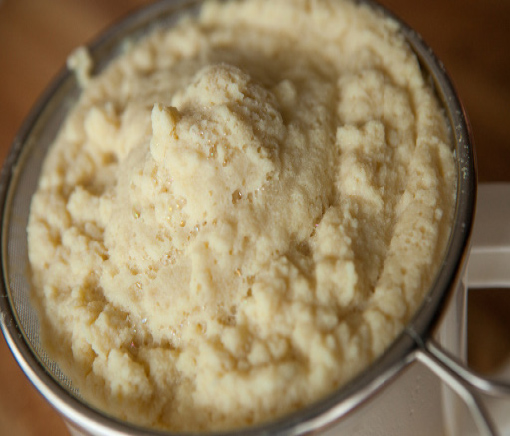
- Misuzu Life continues to expand rapidly within Japan and has even set its sights on frozen shimeji exports overseas. The question is how? I was very interested to study the history of the company and inquire just how it has managed to be so successful in a sector of the Japanese mushroom industry comparable to Agaricus mushroom cultivation abroad_emdash_lots of competition, low prices, and extremely tight margins. The answer was not a shocking secret formula or blind luck, but a straightforward example of standard business strategy and long-term planning. First, the company was the first grower to sell cut shimeji, a project the company began in 1999. This was a difficult project that required the company to engineer a cost-effective and practical automated cutting system, which was not achieved until 2007, and subsequently transitioning all growing operations to exclusively produce cut shimeji by 2013. Being the first to a widespread launch is often a huge advantage, especially when the company is in a position and has the capital to rapidly scale up.Prior to this, shimeji was almost exclusively sold as whole clusters with mycelia and substrate attached to the bottom_emdash_the same condition enoki mushrooms are typically sold even now. After purchase, consumers had to cut and pull apart the cluster, and this could sometimes damage the mushrooms not to mention the trouble of cleaning up the crumbling substrate from cutting boards afterwards. “It’s convenient, right?” That is how the CEO of Misuzu Life, Tetsuya Ichiyama (who goes by “Tiger” when talking with English-speaking clients), described the phenomena. It may seem like a trifling convenience, but after using cut shimeji once or twice, I also could no longer see any point in buying clusters. Unlike enoki where I buy the clusters when I want to cut enoki finer than the set length in cut enoki packs, or, to the contrary, want long, uncut enoki, as is primarily used in Japanese hot pots and sukiyaki, there are no drawbacks to cut shimeji. This is why cut enoki has not grown as rapidly as cut shimeji has, and highlights the importance of careful considerations of how differences between how individual mushrooms are used.Aside from the convenience of Misuzu Life’s product, the company took a different approach to mushroom cultivation as well. While the other large-scale shimeji producers in Japan focused on developing strains with neutral flavors and no bitterness, Misuzu Life embraced a more natural tasting, flavorful variety, crossbreeding with several wild specimens collected from scenic Mt. Kurohime in Shinano Town, Nagano to create the Kurohime-S variety, which the company made its only variety from 2010 onwards. The faint nuttiness and richer flavor of Misuzu Life’s shimeji have helped them stand out and made them one of the most popular producers in Japan. The company’s growth, then, is a combination of beating the competition to large-scale production of cut shimeji and having a unique, appealing flavor profile that dared to take a less standardized approach than other competitors.
- An aggressive business strategy of expansion and various innovations in the cultivation process have also made Misuzu Life cost-efficient and minimized space and labor requirements while maintaining consistent yields with almost no contamination episodes. This echoes a statement I made in a previous issue of the Japanese Exotic Mushroom Journal, but the lesson to take from successful Japanese mushroom farmers is that it pays to do everything well. I realize that stating the issue in such a fashion makes it seem painfully obvious, but what I mean is that specialization and tunnel-vision rarely lead to breakthroughs and lasting success, while paying equal attention to multiple spheres of the business and ensuring all the different pieces are moving well is the standard trait of the most successful producers. Thus, Misuzu Life has its own patented air conditioning system (which it even sells to other mushroom growers as a side business), and also has unique cultivation strategies, a carefully selected company strain that yields a brandable Misuzu Life flavor, and an eye for consumer needs and desires, expressed in its convenient cut shimeji product line. That’s what I mean by tunnel vision; Misuzu Life didn’t focus exclusively on cut shimeji, or on creating a more flavorful strain, or just cutting costs as far as possible (even at the expense of flavor), the company has been immensely successful because it balanced the conflicting demands of the different elements of the mushroom business.From the start, Misuzu Life has been ahead of the time, as its founder made sustainability and environmental impact core goals of the company, way back at a time, 1991, when very few people were talking about SDGs (Sustainable Development Goals) or the growing burden of agriculture on the environment. The company, as I noted at the beginning, even began as a result of attempts by Mr. Kobayashi to sell dried tofu lees leftover from the mass production of fried and freeze-dried tofu. It was the innovative discovery that corncob could be used as a cheap substrate for shimeji, and that dried tofu lees was an excellent nutrition supplement that made shimeji an affordable staple food in Japan. Now, the company grows 8,500 tons of fresh mushrooms a year using corncob waste from corn production in Thailand, supplemented with dried tofu lees from tofu producers in Japan, which is, again, also largely a waste product, otherwise sold as a cheap livestock feed. In addition, the substrate contains small quantities of rice and wheat bran.Consideration is another of the core tenets of Misuzu Life. Their cut shimeji system makes cooking easier for their consumers and the base of the mushroom stem and substrate-encrusted mycelia, are composted and reused, rather than simply thrown away, in consideration of the environment. Along with the cut stems, the leftover substrate is fermented in separate facilities in the company, including an automated system to mix the piles of used substrate, and then either sold as a soil conditioner (which improves the efficiency and stability of chemical fertilizers) or reused by the company.The reuse of some substrate was one of the most interesting innovations I saw at Misuzu Life, and one which is still a work in progress. The company ferments the previously used substrate and then integrates it with new substrate to use for another round of cultivation. Through a unique and challenging cultivation process, Misuzu Life has managed to use this substrate to grow a special line the company has labeled “Buna Queen.” Buna Queen consists of jumbo-sized shimeji with nearly 1.5 times as much glutamic acid as normal shimeji and thus have a much deeper, richer umami flavor closer to that of wild mushrooms. In addition, Buna Queen have higher concentrations of L-orthenine, an amino acid that is involved in the urea cycle in the liver and kidneys and has been shown to help in the metabolism of alcohol and in reducing exercise fatigue. The production of this special variety, however, is difficult, and the company has not yet scaled up the cultivation of Buna Queen, so that its availability is still limited.
- I was impressed however, at the possibility of further reusing a large portion of used substrate in the future. Even a large, scaled-up producer of exotic mushrooms like Misuzu Life, is producing zero waste in the traditional sense. What goes into the cultivation bottles (which themselves can be reused for up to 15 years before they are recycled into other plastics) is 100% waste products from agriculture, and what comes out is enough high-quality plant-based protein and nutrient-dense mushrooms to make over 80 million meals a year (considering an average of 100 grams of shimeji per single-person meal). The remaining waste? Used as soil conditioner or dried and integrated into livestock feed for cattle. Pesticides? Japan has banned the use of pesticides and fungicides in mushroom cultivation. Unlike with Agaricus cultivation in the U.S. and EU, there are no registered chemicals that exotic mushroom cultivators can use in Japan. The runoff water has relatively low nitrogen content and does not have to be specially filtered or processed and there is very little smell compared to Agaricus production which involves composting animal manure and straw mixtures. Even the space constraints and labor requirements are very low, making climate control the primary cost. The only mushroom that it is physically possible to grow cheaper than shimeji are enoki, and that is mainly because of the difference in incubation needs; shimeji require 90-110 days from spawn injection to harvest, compared to 50~60 days for enoki. Enoki also has the advantage of a very high bioeffiency, yielding 30~40% returns in one flush compared to 20~25% for shimeji. Even so, shimeji, after enoki, are the most affordable commercially available exotic mushroom and competitive even with Agaricus prices given investment in the proper facilities and automation.In Japan, the collapse of oyster mushroom cultivation is largely due to shimeji; oyster mushrooms couldn’t beat the cheap prices of shimeji, and shimeji were more robust, less prone to damage in shipping, and had a longer shelf life. Consumers too, like how shimeji retain their bulk and maintain their nice crunchy, firm texture even after cooking, which has made them a perennial favorite in Japan for pasta dishes, pizza toppings, tempura, and stews and soups. Compare this to the way in which oyster mushrooms shrink considerably after cooking and have a much less noticeable texture (which is a selling point of oyster mushrooms for people that don’t like the texture of firm mushrooms). The lack of even small-scale cultivation of shimeji in other markets, such as the EU and North America, makes it difficult to judge whether shimeji, if cheap and widely available, could become a widely used staple ingredient, but the variety has great potential.
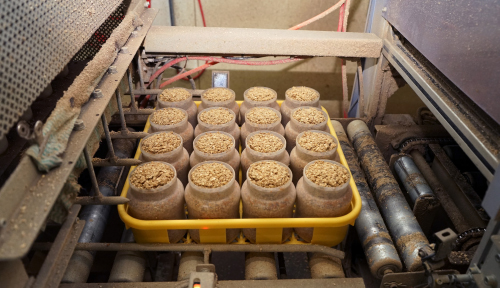
- Frozen ShimejiThe latest and biggest of Misuzu Life’s current projects is the steady expansion of its frozen shimeji line. Shimeji are well-suited to freezing, and the freezing process actually increases their umami flavor by damaging cell walls and allowing more glutamic acid and other umami flavor-signaling compounds to be released from the mushroom fruiting body. Frozen shimeji have a long shelf-life of up to one year, and can be shipped and stored more safely than fresh mushrooms given proper infrastructure. What has drawn Misuzu Life to this venture is the towering issue that mushroom farmers in Japan face: the summer glut. You see, Japanese consumers are among the most intensely and stubbornly seasonal buyers in the world. Mushrooms also have a substantial glut in European countries as well, where there is strong seasonality to mushroom consumption, but Japan has a particularly challenging issue: enormous demand for mushrooms in autumn and winter that requires huge facilities and lots of equipment and workers, followed by a prolonged slump starting as early as March and lasting as late as October, with troughs in midsummer where companies are seeing as much as a third less demand for their product.Japanese growers, including Mr. Shimizu of MushWell, who I profiled in the second installment of the Build Your Brand series in 2022, are continually hitting this wall of consumer demand. The summer glut has become a paradox, a Gordian knot on the business side of mushroom cultivation in Japan: on one hand a grower has to be able to, say, fill orders for 400 tons of fresh mushrooms a month from October to February, so they build those facilities, purchase all the machines necessary for that, hire and train the workers to run all the stations, and then promptly have excess production capacity for the remaining 7 months of the year, in many cases only producing 300 tons or less in July and August. The loan payments for all those facilities, and the paychecks for all those workers, don’t magically decrease by 25% in July and August, but demand does. Seasonal production is not financially or practically feasible for a large company, and this makes large excess capacity a major challenge to productivity and financial stability, especially because prices fall even harder than demand. In 2022 for instance, the price of shimeji in the Tokyo wholesale market went from 433 yen/kilogram in February to 241 yen/kilogram in August. That’s a 44% decrease in the price coupled with an 11% decrease in demand between peaks, and shimeji are actually one of the most stable mushrooms in Japan in terms of year-long demand and price. Demand for enoki, for example, drops more than a third and August prices are often less than half the price of January peaks.
- There are two answers to this problem. One is to try and increase consumer demand for mushrooms in the summer months with promotions and new recipes (including mushroom pickles, chilled mushroom dishes and so on), and I liken this solution to attempting to untie the Gordian knot; it's complex, many have tried it, success is limited, and the marketing expenses are very high with uncertain returns. The other solution, the one Misuzu Life (and in a different manner, Mr. Shimizu's as well), have chosen is to freeze excess summer production, store it, and sell it during periods of higher prices and greater demand. I liken this approach to Alexander the Great swinging his sword at the Gordian knot and cutting it off; it cuts through the numerous minutiae of complex issues by circumventing the issue altogether. This is not to say that there is no focus on increasing demand_emdash_everyone in the mushroom industry is working to increase demand and also increase their variety’s popularity; this aspect of the business also cannot be neglected. However, the gains are small and the issue of demand and popularity is an ongoing, never-ending marketing battle, which is what makes new product lines and increasing mushroom shelf-life important as outlets for expansion.Cut frozen shimeji are increasingly a major focus of Misuzu Life’s marketing and expansion strategies, and one the company views as an extension of its motto of consideration for users; the latest step in making shimeji easier and more convenient to use. This is very well-suited to many Western markets where consumers already have a habit of using frozen chantarelles and Agaricus varieties of mushrooms. Americans in particular place an enormous importance on long shelf-life and ease of use. As a result, Misuzu Life has taken a keen interest in finding import partners and new buyers for its frozen shimeji abroad. There are exceptional challenges involved in building brand loyalty and stable client networks for the international export of mushrooms, but Misuzu Life is a big player with a proven track record of innovation and savvy expansion that puts them in a good position to succeed. Misuzu Life has a vision of shimeji as a cheap, sustainable staple food on par with eggs, healthy, delicious and easy to use with almost any dish. The company has excelled in Japan, and what remains is to see whether it can become a major player in the international mushroom industry.
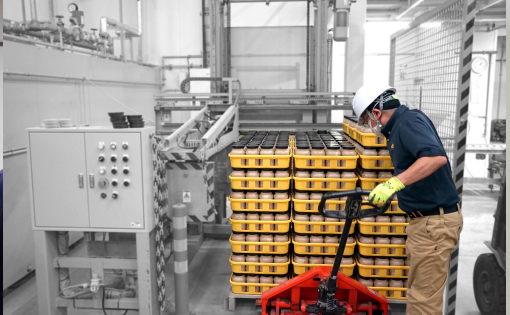
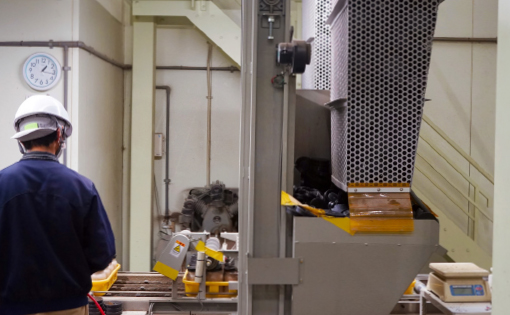
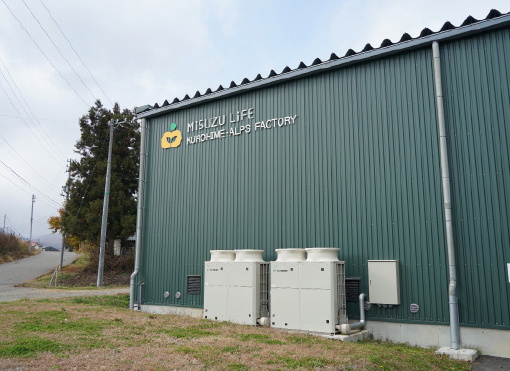
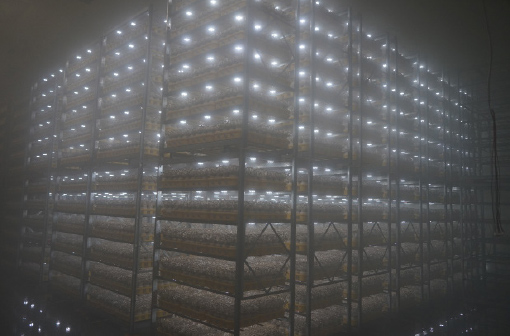

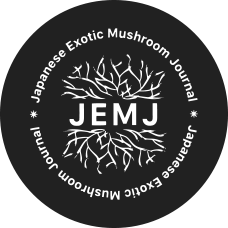



 1-2-13 Honmachi, Komoro city, Nagano prefecture, Japan 384-0026
1-2-13 Honmachi, Komoro city, Nagano prefecture, Japan 384-0026